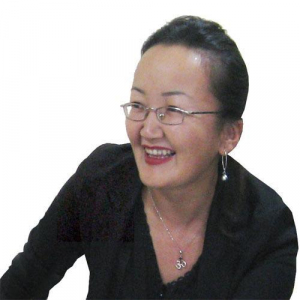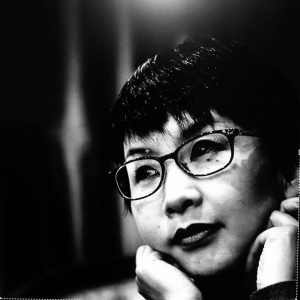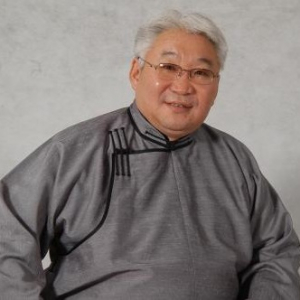A terrible story that distorts history
The events of 1921 were told to us by the Russians in 1955. The poor Mongolians learned what happened when the USSR Academy of Sciences published a book called "History of the Mongolian People's Republic ." Our generation took exams on this history and grew up memorizing it. Looking back, I realize that it was all a lie. As the great Tsetserun said, "If you don't know your history, someone else will."
A terrible story that distorts history
Twenty-five years have passed since the democratic revolution in Mongolia. There is such a thing as a generation; 25 years is one generation for a person. In other words, a whole generation of democracy is changing in Mongolia. But it has not yet become history. For any historical fact to become history, several generations must change. Shortly, the actual results, many aspects, consequences and roles of this event have not yet been clarified. Therefore, they have not been studied. The researcher himself is a participant and a living witness of the event; thus, he approaches the issue subjectively. It means that the Heisenberg uncertainty principle is applicable.
A few years ago, a small book about the democratic revolution in Mongolia was published in the United States, titled Modern Mongolia: From Kings to Commissars to Capitalists. It was also hastily translated into Mongolian because it had a sponsor. The author is Professor Morris Rossabi of Columbia University, a sinologist. But he is an expert on the history of medieval China. He wrote a book called Kublai Khan. Kublai was a medieval Chinese ruler, so he took up this topic, and the Mongols were not his area of expertise. There had been many monographs on Kublai before, and pof. Rossabi could not come up with a single new conclusion. Although Rossabi was of Arab origin, he did not find anything new to study in the new multifaceted relations between the Arabs and the Chinese at that time. In general, Arab and Persian historians were the first to distort the history of the Mongols in the Middle Ages.
Americans who know little about Mongolia would probably distinguish between China and Mongolia as if they were the two coasts of their own country. The Chinese of the 12th century and the Mongols of the late 13th century are not so different from them. They have the same slanted eyes, flat faces, and incomprehensible language. So Rassabi boldly took on the unfamiliar subject of Mongolia's 1990 democratic revolution, as if he were tackling a horse he couldn't ride. The main thing was to have money for such a project. Who doesn't like money?
He completed his collection of primary sources by meeting with one or two Mongolians who had studied and travelled in America. Overall, writing the book was his main challenge, but the author did not set himself the goal of explaining and proving the truth to readers. The author was not genuinely interested in comprehending this historical event in Mongolia. The fact that he did not have to meet living witnesses to describe Kublai makes the monograph "Modern Mongols" incomparably more "heavy" and "scientific", since it required more work and effort. Moreover, compared to many Americans who lived and worked in Ulaanbaatar, Rossabi's understanding of the Mongols, not to mention modern ones, is more mythological.
Interestingly, Rossabi's prediction that the first rally took place in Ulaanbaatar on December 10, 1989, is correct in date. However, on that day, as author predicted, there was no demonstration, but a rally. The two events are different. However, it is strange that the rally took place in front of the Government Palace, with elite parents watching from their office windows as their children misbehaved. As someone who has done extensive research on this topic, I can say with certainty that none of the organizers of the first rally had parents who were servants at the Government Palace. Strangely, Rossabi insists that the children of the communist aristocracy were necessarily involved in this revolution. According to him, someone who has worked as a diplomat abroad is considered elite. For tired, stupid, ignorant Mongolians, there is a society in which you can become elite by living in Moscow for three years. In the past, a young man returning from military service became an elite in his somun. If we call the intelligentsia an elite, then in the nineties, Mongolia had a huge army of intelligentsia. In terms of the number of intelligentsia and students per ten thousand people, Mongolia was considered a developed country. Among the organizers of the meeting were both ordinary intellectuals, such as Zorig, Tsogtsaikhan, and Enkhtevshin, as well as individuals from peasant backgrounds, including Sosorbaram and Elbegdorj. At that time, if a group of ordinary people gathered in Ulaanbaatar, it was a group that constituted an ordinary group, a group of ordinary people.
According to professor Rossabi, the founders of the Democratic Revolution were a few friends who had been educated in the secret circles of perestroika near Moscow and were fluent in foreign languages. They were almost like Gorbachev's spies. It was they who planned the revolution, together with their parents, who worked in the state palace. According to author, the Humanitarian Revolution, which carefully thought out the social security system, identified and analyzed the negative aspects of capitalism and found ways to circumvent them, was carried out by the "elites." They must have even been aware of the development of corruption and counteracted it in advance. Isn't this very similar to the Bolshevik Revolution of 1917? Doesn't a person who knows the history of the Communist Party of the USSR by heart say that professional revolutionaries from the elite, who had lived abroad for many years and were determined to bring happiness to their people, introduced the working class to the idea of revolution and called on humanity to eternal happiness? Professor writes: "It was the sons and daughters of the Mongolian elite who initiated the nonviolent movement that led to the overthrow of the authoritarian system. The reformers, who mostly came from the intelligentsia and professional classes, lacked military power and opposed the use of violence. Thus, the movement for change originated at the top of the social hierarchy, attracting people from the lower strata, and gradually evolved into a broad mass organization. The authorities did not resort to repression, in part because democratically minded dissidents belonged to the elite."
Overall, this book is hilarious, and one gets the impression that the author had some elite revolution in mind and organized and "documented" the events accordingly. The style of writing, layout, documentation, and conclusions are strikingly similar to the history of the Bolshevik Party as dictated and written by Stalin in 1938.
The 20th-century Mongolians, descendants of nomadic herders, have not yet formed an elite class. Since the massacre of the aristocracy in the 1930s, they are perhaps the only society that has truly become the rootless class that Marx dreamed of. Including the period after the democratic revolution, this society is only entering its third generation of intellectuals, employees, and city dwellers. Since one man's father and another's grandfather left the steppe for Ulaanbaatar, who can force another to become an elite class twenty years apart in the city? According to the book, Elbegdorj, a rural herder of humble origins, was named after the rough- and-tumble man who founded the Democratic Union, to the ire and laughter of the elite intelligentsia who spoke foreign languages and lived abroad. Elbegdorj, whose father was a shepherd, is a first-generation urbanite. At the same time, those the author calls "the elite" are second-generation urbanites, with a difference of only 20 years: Elbegdorj graduated from a university abroad and speaks Russian. Is there a difference between them?
The children of the communist leaders who, as the book claims, first conceived and carried out the Democratic Revolution, were arrogant narcissists. None of the ministers' children participated in the democratic revolution. They only join the victors. At a time when it was unclear who would win, they pulled the blanket over their heads and hid in warm corners. Today, democracy has completely won ideologically; the "elites" not only grabbed the social pie, but also talk about how they came up with the Democratic Revolution and how mentally ill alcoholic Mongolians ruined their good ideas. In fact, since 1992, when it all ended, they-narcissists have been trying to rise above the ranks of the new political parties, demonstrating their Latin, The same parents from the "elite" warned them that there were predators who wanted to suppress the Democratic Union by military force. Gorbachev ordered them to stop, but it happened. However, the person who realized that it was time to hand over state power to the next generation was the "predator leader" Batmunkh himself. The democratic revolution was the result of the Mongolians' consent. However, the sinologist researcher imagined that the Mongolian communist leaders were afraid of the introduction of Chinese troops and surrendered to the Democratic Union. When 100,000 Soviet soldiers were in Mongolia, the "smart" elite feared a military invasion by China! The hunger strike of the Democratic Union was organized by the Chinese-speaking elite, who learned about what happened to the Chinese students in Tiananmen Square. Even during the Song, Yuan, and Ming dynasties studied by Rossabi, the Mongols did not make decisions out of fear of the Chinese.
Professor Rossabi, driven by his elitist theory of revolution, "analyzed" the false rumours that were spreading on the streets and documented them. As he wrote, Enkhsaikhan and Amarjargal had recently migrated from the village. Ganbold's father was Chinese, Zorig's mother'swhile father was a Buryat herder who the Mongols had killed on Soviet orders. Additionally, Bat-Uul and Prime Minister Byambasuren were close relatives. Such stories were invented and spread by the parents of the "elites" mentioned in the book as the founders of the Democratic Union, who were then members of the Mongolian KGB. Rossabi attempted to demonstrate that the Mongolian democratic revolution was a product of a hybrid of Chinese and Russian influences. Such stories were fabricated by the Ministry of Internal Affairs in 1989 and publicly disseminated in newspapers. The Mongolian democratic revolution was a deliberate choice made by the people of Mongolia.
The book is filled with false accusations and empty promises. In 1988, Bat-Uul, Tsogtsaikhan, and Amarsanaa founded a secret circle called "New Generation," and Zorig had no involvement in this incident. The Democratic Union was founded at the 2nd Conference of Young Artists, held on November 26, and Zorig was not there at all. Someone brought him to the next meeting. He was chosen as the general coordinator of the Democratic Union because he was a teacher of communist theory at the university, and not, as auther says, because he was revered as a "golden magpie." The reason was that the founders of the Democratic Union were united in the idea of further improvement of socialism, and they needed a theoretician in this area. On the contrary, as Rossabi attempts to demonstrate, there was no ideological division into distinct factions, whether it involved a direct transition to the market or a gradual movement away from social protection. The author not only mixed and matched the circles of reformers that arose almost simultaneously at the time, but also created a "taxonomy" of his own "isms" and ideas, applying them to the foreheads of those he encountered.
Professor's book is full of unexpected fictional stories. The democratic elite wanted to make a revolution now, but the communist leaders demanded it be done in five years. The elite protested the five-year deadline and organized another demonstration. Perhaps such a conversation took place in the kitchen between a KGB colonel and his elite student son studying abroad. But what does this have to do with the historical event in which the Mongolian people chose their path of their own free will? The workers of Erdenet, who despised the Russians, rebelled. As soon as the elite who initiated the Democratic Union learned of this, they sent Bat- Uul, a hooligan and a rude man. The other, a skilled strategist, negotiated with the Erdenet workers and won them over to his side.
Taking advantage of the fact that January 21 was the anniversary of Lenin's death, the same elites planned an even bigger event. On February 16, the cold-blooded and ruthless scoundrel Davaadorjin Ganbold was the first to found the National Progressive Party and call for the privatization of all state property and industrial banks. The elites who inspired the Democratic Union opposed this, categorically rejecting state social security, and this is probably why the Democratic Union began to split. Two days later, the same boor Bat-Uul founded the Democratic Party and invited 200 journalists to its meeting, but the communist elites did not permit for this. It was said that the law forbade communists from wearing Mongolian robes. However, ten people wearing such prohibited clothing suddenly, on their initiative, voluntarily went out to the central square, lay down and declared a hunger strike. The Democratic Union not only supported this hunger strike, but its elite leaders also went to the hunger strikers and began informing the astonished masses about the legality of hunger strikes. Thus, I learned from the author that the Democratic Union did not organize the hunger strike on March 7, 1990. That must be the reason!
Rossabi shed light on many events that we did not know or had never heard of at the time, and that is why this monograph became more important than the democratic revolution of 1990 itself. For example, in support of the hunger strike, strikes were declared in Erdenet, Darkhan, Muron, and other locations throughout the country. The Gandan Monastery, considered the fifth column of the KGB, supported the hunger strike and organized rallies and demonstrations for its monks, as in modern Burma. Politburo member Molomjamts tried to send the police and army to the hunger strikers. Therefore, Brother Bat-Uula, for example, Minister Byambasuren, was sent to the hunger strikers, but, alas, negotiations took place. The hunger strikers and protesters attacked the residence of the head of state, Batmunkh, and the Soviet embassy. Most of the protesters were alcoholics and mentally ill, so the elite of the Democratic Union lost control. And something terrible happened! More than seventy people were injured, and one died! The revolution we are proud of having carried out without breaking a single window or shedding a single drop of blood from our noses is completely negated by this irrefutable scientific "fact"!
Professor lacks basic knowledge of the party and state systems of that time, including the People's Congress, the Central Committee of the MPRP, and the Politburo. Therefore, he confused them and did not understand what he was talking about. He did not want to delve into the basic facts about the numbers, dates and events mentioned in them. It is quite understandable why he did not find any documents on this topic in either Chinese or Arabic. After all, in medieval China, the hieroglyphs used were different from the modern ones.
A few years ago, I read an article by a Polish journalist about the democratic revolution in Mongolia. The article stated that in the winter of 1990, several Polish students visited Ulaanbaatar. Then Kasparov, in an interview with Playboy magazine, said that Mongolia should be sold to China. The Polish students informed the Mongolian people about this. The angry Mongolian students went to the central square and declared a hunger strike, which led to the democratic revolution in Mongolia. If the Polish students had not come then, the Mongolians would have had to build socialism and rest. A good, simplified pantheon. But this is just a harmless article by a journalist, once published in a newspaper. But what if the pantheon comes out, dressed in the skin of science, and spreads its wings like a scientific cloak? Time flies.
It has been 25 years since the democratic revolution. It is receding further and further into the past, ever closer to becoming a part of history. When the living witnesses are no longer available, Rossabi's monstrous invention will become historical truth. Even more pernicious is that this story is published in English as the work of an American scholar. The number of citations measures the value of any scientific work. It is said that a work written in English is cited 20 times more often than a work written in French on the same topic. It is the complete dominance of the English language.
The events of 1921 were told to us by the Russians in 1955. The poor Mongolians learned what happened when the USSR Academy of Sciences published a book called "History of the Mongolian People's Republic ." Our generation took exams on this history and grew up memorizing it. Looking back, I realize that it was all a lie. As the great Tsetserun said, "If you don't know your history, someone else will."
2015.1.10







